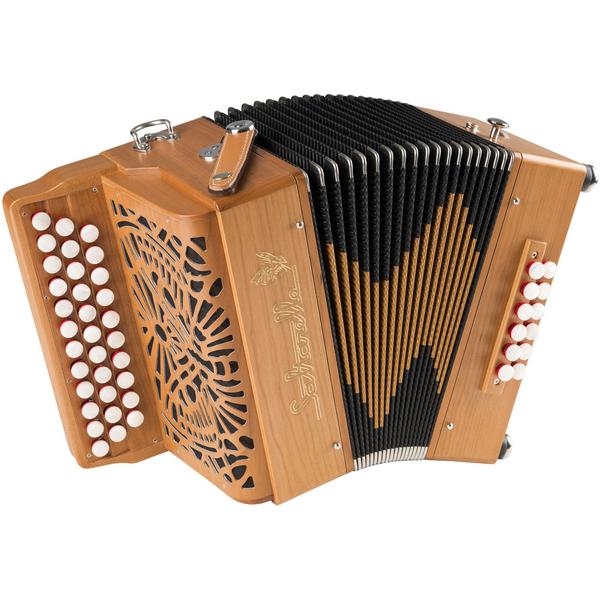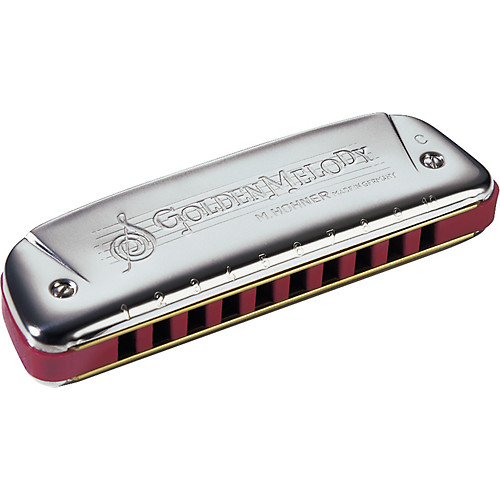- HQ/Mail Order - 0333 800 9500
- Our Shops
- Birmingham - 0121 212 9010
- Brighton - 01273 760022
- Bristol - 0117 929 0902
- Canterbury - 01227 769484
- Edinburgh - 0131 667 8241
- Leeds - 0113 245 3311
- London - 020 7323 9040
- Manchester - 0161 273 1000
- Southampton - 023 8023 1099
- View all branch details in full »
- HQ/Mail Order - 0333 800 9500
- Our Shops
- Birmingham - 0121 212 9010
- Brighton - 01273 760022
- Bristol - 0117 929 0902
- Canterbury - 01227 769484
- Edinburgh - 0131 667 8241
- Leeds - 0113 245 3311
- London - 020 7323 9040
- Manchester - 0161 273 1000
- Southampton - 023 8023 1099
- View all branch details in full »
Piano Accordion

Piano Accordion
DEFINITION
A free reed instrument with a keyboard originating in Saxony and Bohemia, now common throughout the world in folk music. Various types include piano and button keyboards, and chromatic and diatonic tunings.
INTRODUCTION
Ideal for beginners, is the 48 bass, usually with 6 rows of 8, allowing accompaniment in the keys of Bb, F, C, G, D, & A. The treble of the 48 and 12 basses usually has 26 keys, just enough for most tunes. A 120 bass with 41 treble keys is the full size model, The bass gives a chromatic scale, and all the chords, in 6 rows of 20 (counter bass, bass, then major chord, minor, seventh, and diminished). The 72 bass usually has a smaller 34 note keyboard, but retains the 6 row bass.
FURTHER INFORMATION
While the Accordion is no longer a mainstream instrument, its popularity is growing again. It is very important in traditional music particularly in Scotland. There are still many accordion bands, marching bands, and accordion competitions.
The Piano Accordion tends to suit beginners who can already read music or play the piano, as the instrument is very logically laid out, and of course has a familiar keyboard.
HISTORY
The Piano Accordion first appeared in the late 1800s, initially they were like a melodeon with a piano keyboard, and a limited number of basses. During the 1920s, great improvements were made to the design and sound, and with the Stradella bass system, a full left hand accompaniment became possible. The Accordion became enormously popular in the 1930s, and ended the era of the Concertina.
CHOOSING
Demonstration of the different Accordion sizes by Mark McCabe
HOW MANY BASSES?
The size of the instrument is usually denoted by the number of basses. These basses are arranged in rows of 6 buttons for each key: counter bass, bass, then major chord, minor, seventh, and diminished.
A 120 bass with 41 treble keys is the full size model, and the bass end offers a chromatic scale, and all the chords, arranged in 6 rows of 20. An 80 bass has 5 rows of 16 (omitting the diminished row), and a 37 note keyboard. A 72 bass has a 34 note keyboard, but retains the 6 row bass.
The most popular size, and ideal for beginners, is the 48 bass, usually with 6 rows of 8, allowing accompaniment in the keys of Bb, F, C, G, D, & A. The treble keyboard on the 48, 32, and 12 bass models usually has 26 keys, enough for most tunes, but limiting for a pianist.
TUNINGS AND OTHER FACTORS
Many players have to compromise between portability and range of notes. 48 and 72 bass are the best options for most folk musicians, but you only get the full range of notes, and variety of sound from the registers on a full size 120 bass.
Most 2 voice Accordions are tuned with a moderate amount of tremolo, 3 voice have the low octave as well, and musette models have three sets of reeds tuned quite far apart in a strong tremolo, plus a low octave set.
Cassotto accordions have an extra sound chamber which changes the sound quality significantly.
Article on Choosing Accordions by Sarah Mallinson
The piano accordion is a fantastic and versatile instrument. Being fully chromatic it is suitable for any kind of music but has seen increasing usage in folk and traditional music over the last few years. One only has to see Karen Tweed, Sam Pirt or Chris Parkinson in action to appreciate the more sensitive side of the piano accordion as well as offering the range of a full orchestra within itself! It is an easy transition for anyone who already plays the piano and fancies a more portable instrument to take to sessions etc. The keyboard side is identical to a piano and the bass buttons supply notes and chords that are laid on in a logical pattern as detailed below.
Accordions are sized according to the number of bass buttons, 12 bass, 48 bass 72 bass and 120 bass being the most common sizes. Other sizes are available but they all still follow the same pattern of bass buttons. Each vertical row usually has 6 buttons laid out thus: (from top to bottom) Bass/tonic of chord, major, minor, seventh, diminished and a counter bass button which is a third above the tonic. This enables bass runs and tunes to be played without the chords. A 48 bass, for example, would have 8 rows each containing this pattern of chords and notes: Eb, Bb F, C, G, D, A and E. This is a perfect size to learn on, having 2 octaves on the keyboard side, and 8 rows in the bass, which gives you a decent range to begin with and is not too overfacing when starting out. A 72 bass provides all the sharp and flat keys in the bass and is fully chromatic with a slightly longer keyboard. This size is favoured by Chris Parkinson, Sam Pirt, Karen Tweed (and myself!), and has everything you would need for the majority of tunes and songs. Classical players will go to a 120 bass if they possibly can because of the longer 41 key keyboard, which particularly suits piano players, and repetition of some chords at the bass end which offers greater versatility, but this large instrument is often rejected by folky players, partly because of its lack of portability but also because there aren’t many folk tunes that require such an extensive range!
The piano accordion really can be used very simply or with all guns blazing! An entire background accompaniment can be created by pushing a couple of bass buttons. Sam Pirt uses this ‘power chording’ technique in the bass to great effect. If you ever get the chance to attend one of his workshops at a folk festival, you won’t regret it. He holds beginner, intermediate, and advanced courses, and is an inspiration. However, using just the keyboard side to play a melody with guitar providing the rhythm can be extremely effective too, especially in a session, where the bass side of an accordion can be overpowering. I sometimes use my accordion for song accompaniment by playing bass notes as a drone and gradually incorporating more in the way of chords and melody to build up the sound gradually.
There are different voices available on the keyboard side and sometimes on the bass side too. These allow different tones and sounds to be used to suit the mood of the piece – a bit like voices on a keyboard but more subtle and natural sounding. The Scottish style of playing favours a fuller sound with more voices, as a general rule, and Irish style, like Karen Tweed’s, a purer one voice sound. However there are no hard and fast rules on this, you can use your imagination!
One problem that accordion players often have, particularly later in life, is that a 72 bass model or larger, which offers a good range, is very large and heavy, and many players find themselves moving to a 48 bass so that they can continue to play without sustaining injury, or perhaps worse, gradually falling over forwards mid-tune! There are some precautions players can take to increase comfort and reduce strain. It is important to sit correctly and have the straps adjusted to suit you, and it’s worth having a lesson or two to make sure you are getting this right. A backstrap, which pulls the shoulder straps together at the back, can take some of the strain off your neck and back.
Delicia have come up with a nifty compromise for the weight and size problem, by creating a 72 bass accordion the same size as a 48 bass Accordion. The weight is just under halfway between a normal Delicia 48 bass and 72 bass. It has the 3 voices of a 72 bass accordion, and the main compromise is in the keyboard, which does not extend to the same low range as a full sized 72 bass.
Another Accordion which offers compromise is the Scarlatti 48 bass with a 34 key keyboard as opposed to the usual 26 keys of this size of accordion. The bass buttons are arranged in rows of 4 rather than 6, and it weighs a bit more than the Delicia mentioned above, but still less than a full sized 72 bass. This is more of a student model, and is much cheaper than the Delicia, which is a mid range instrument.



